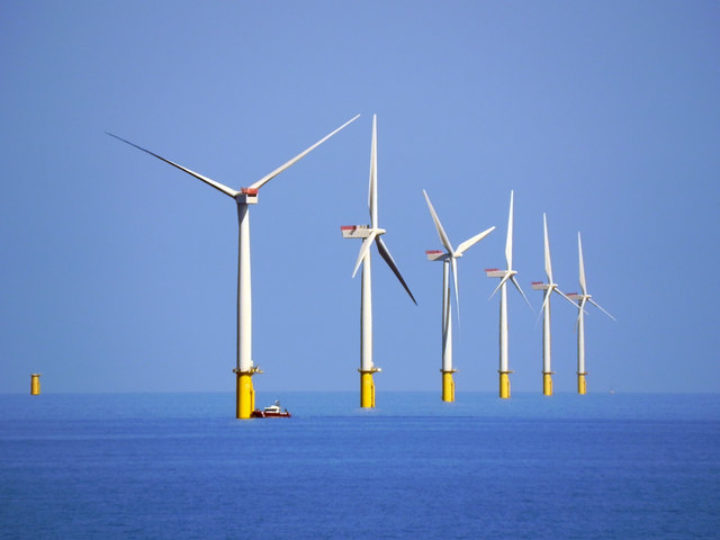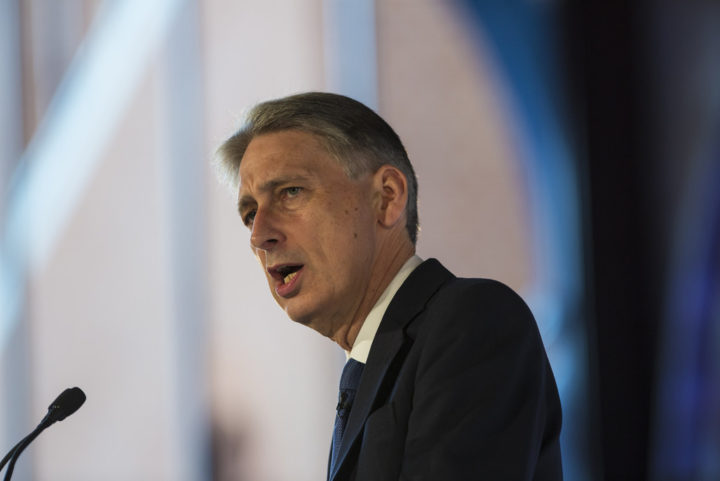Wind-fall: Treasury nets clean energy savings
Ahead of the Budget, changing market conditions mean there's spare money in the renewables pot
By Jonny Marshall
Share
Last updated:
Last year’s Budget delivered an unexpected blow to the UK’s green economy, in the form of a document entitled ‘Control for Low Carbon Levies’.
Described as a vital means of keeping energy costs as low as possible, the document pressed the pause button on new low carbon electricity levies beyond contracts already agreed or scheduled auctions ‘until the burden of such costs is falling’.
Treasury forecasts signalled that this would not occur until 2025, when contracts signed to support the earliest (and highest cost) low carbon generators would begin to expire.
However, the latest data shows this forecast was too pessimistic: since last year the 'policy costs' for some renewables projects has been falling. Contracts are on track to work about 25% cheaper than expected; as a result, Chancellor Philip Hammond has spare money in the clean energy pot.

This isn’t about the much-publicised plunging costs of wind and solar or the increasing ease with which variable renewable output is managed by the grid. Instead, it concerns the way in which the newest low-carbon power projects are funded.
Since 2015 the UK Government has favoured the Contract-for-Difference (CfD) as a means of bringing renewables to market, an instrument that guarantees the revenue of a low-carbon generator by topping up money earned in the wholesale market to a pre-agreed amount.
This pre-agreed amount is known as the strike price, and is generally determined by auction (although some early deals were done bilaterally which, without the benefits of competition, commanded higher prices).
To choose one example, the (few) onshore wind farms that won CfD contracts in the first allocation round will be paid £82.50 for each megawatt hour (MWh) of electricity generated, for the first 15 years of their lives. This has upsides for the owners, having de-risked their revenue stream and therefore reduced debt and finance costs; and it has downsides, as they won’t receive more than this should power prices surge.

Bullish
And surge is what power prices have done. Not to the level that would see wind farm owners returning a steady stream of cash to the Treasury, but to the extent where the pot of money needed to top revenue up to the pre-agreed strike prices is significantly lower than forecast.
Last November, when the 2017 Budget was delivered, Treasury forecast that the wholesale electricity price for this financial year (2018/19) would be around £41/MWh – necessitating an average top-up of just over £40/MWh for CfD-accredited onshore wind farms. However, energy commodities have been on a bull run this year, with the cost of coal, gas and carbon emissions all driving UK power prices higher.
So far this financial year, the average UK wholesale power price has been £57/MWh.[1] Include the current cost of power for the next six months on the futures markets and this brings the average for the financial year up to £65/MWh,[2] around 60% more than Treasury forecast.
During FY18/19, Treasury was expecting to oversee 'top up' costs of £1.1 billion to make good on CfD contracts, which currently represent more than 15% of total annual low carbon levies and will pump more than 12 TWh of carbon-free power into the grid. The table below shows the effect of the increase in wholesale price on currently-running CfD-backed projects:
Project | Type | Expected CfD funding (Treasury, £m) | Expected CfD funding (higher wholesale, £m) |
Moor House wind farm | Onshore wind | 2.20 | 1.15 |
Dudgeon Phase 1 | Offshore wind | 46.71 | 37.88 |
Dudgeon Phase 2 | Offshore wind | 108.98 | 88.40 |
Dudgeon Phase 3 | Offshore wind | 52.94 | 42.94 |
Burbo | Offshore wind | 133.89 | 108.60 |
Walney Phase 1 | Offshore wind | 171.26 | 138.91 |
Walney Phase 2 | Offshore wind | 165.10 | 133.91 |
Charity Farm | Solar PV | 0.61 | 0.30 |
Triangle Farm | Solar PV | 0.50 | 0.24 |
Lynemouth | Biomass | 133.33 | 91.54 |
Drax (Unit 1) | Biomass | 362.82 | 240.10 |
TOTAL | £1.18 billion | £884 million |
Table 1: Expected cost of meeting CfD strike prices for projects currently online – Treasury forecasts and expected costs when higher wholesale costs taken into account.[3]
The boost in wholesale revenues means that the cost of bringing wholesale revenue up to the strike price is less than the Treasury expected - 25%, or nearly £300 million less - during the current financial year.
If (and this is a big if, granted) wholesale prices remain strong into the next decade, this annual ‘saving’ against forecasts will increase as more and more CfD-backed projects come online. By 2025, Treasury is expecting the cost of backing CfD projects to reach £2.5 billion per year, a figure that will soar towards the end of the next decade as Hinkley Point and maybe one or two other nuclear projects begin generating.
Decisions ahead
The CfD has been lauded along Whitehall to the extent that it is now the only way of supporting new renewables and nuclear. Competition in auctions for renewables CfDs (though not, yet, for nuclear) has already vindicated the decision to move away from feed-in-tariffs and renewables obligation certificates, and rising wholesale prices could provide further justification.
It's worth recalling that fluctuating wholesale prices have very little effect on the overall price we pay for low-carbon generation. If the wholesale price is low, we pay a smaller amount directly for our electricity and more through the CfD; if it is high, we pay more directly, and less through the CfD.
The real point lies in the fact that having used forecasts of escalating renewables' support to lobby for funding cuts, Treasury now finds itself overseeing less spending than thought. There's money left over - so how is it to be spent?
With Government acknowledging the need to speed decarbonisation to meet carbon budgets, there is obviously a case for Treasury using the windfall in October’s financial Budget to support more low-carbon contracts (if they still need supporting at all). The alternative of simply pocketing it will of course also appeal.
But with ministers including Michael Gove supporting a trajectory to net zero emissions by mid-century, we are clearly in a very different political world than when George 'thus-fast-and-no-faster' Osborne tightened the purse-strings as the cost of renewables proved more than forecast.
And with onshore wind now cheap enough that it will reduce energy bills rather than adding to them were Government to give it a route to market, the case for Philip Hammond relaxing the reins and letting renewables investment loose could prove unanswerable.
[1] Based on historical day-ahead power contracts from the N2EX exchange.
[2] Based on ICE baseload power futures contracts. Prices correct as of 27/9/18.
[3] Project data downloaded from the Low Carbon Contracts Company. Figures reported in the table are at current prices, while those in Treasury documents are at 2011/12 prices.
Share